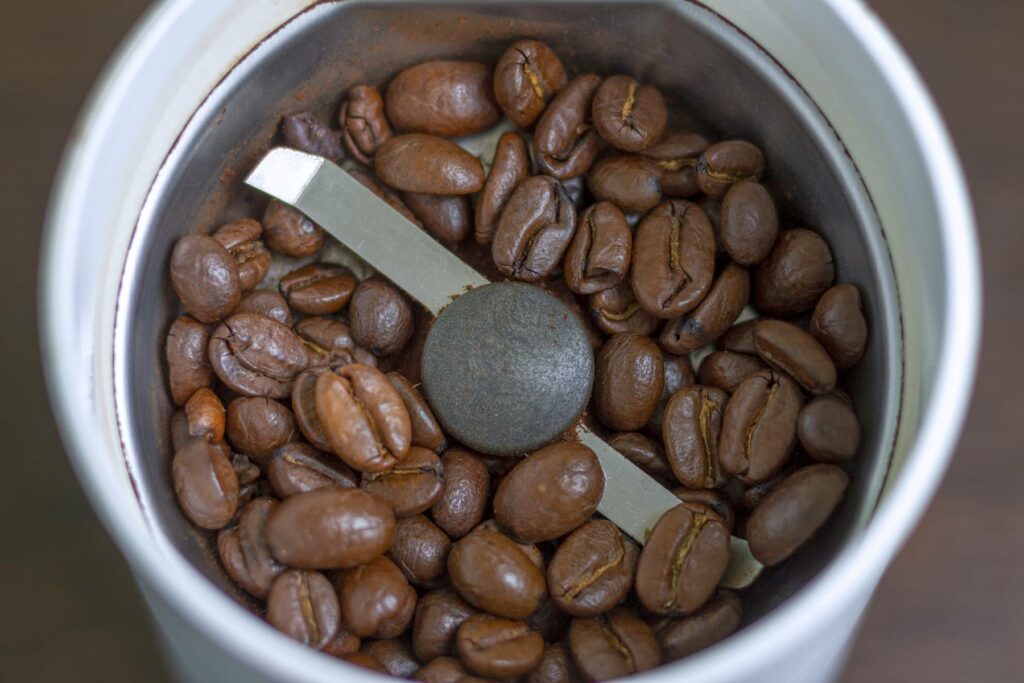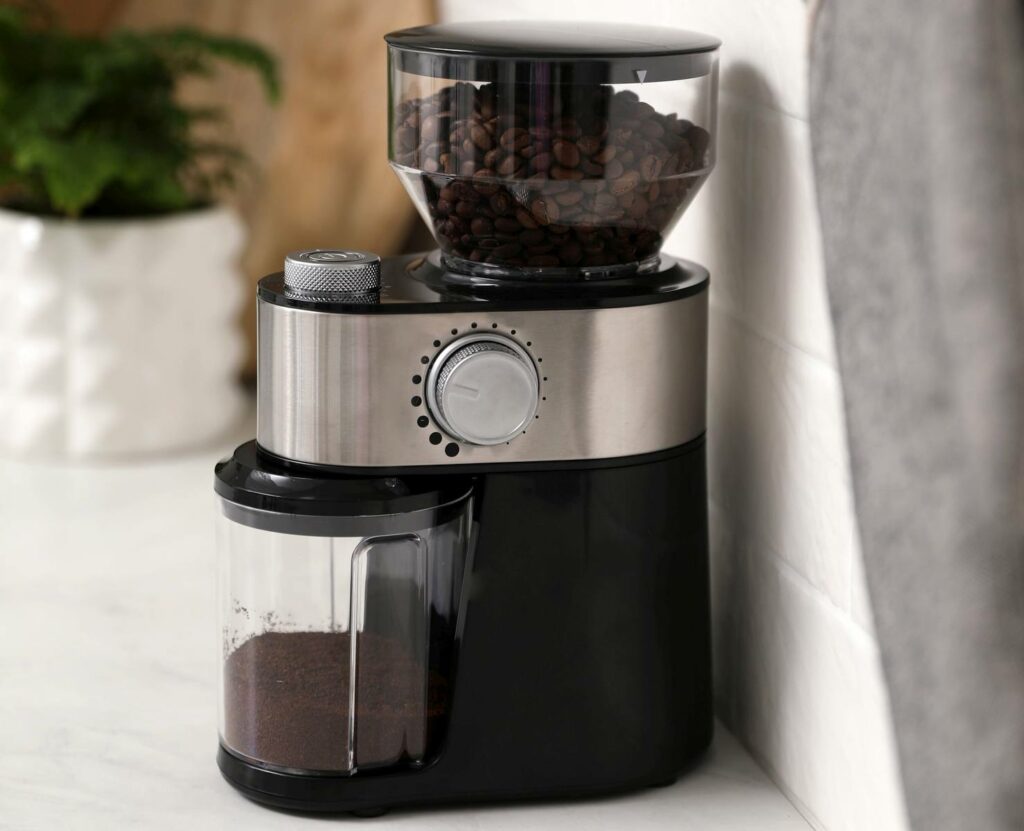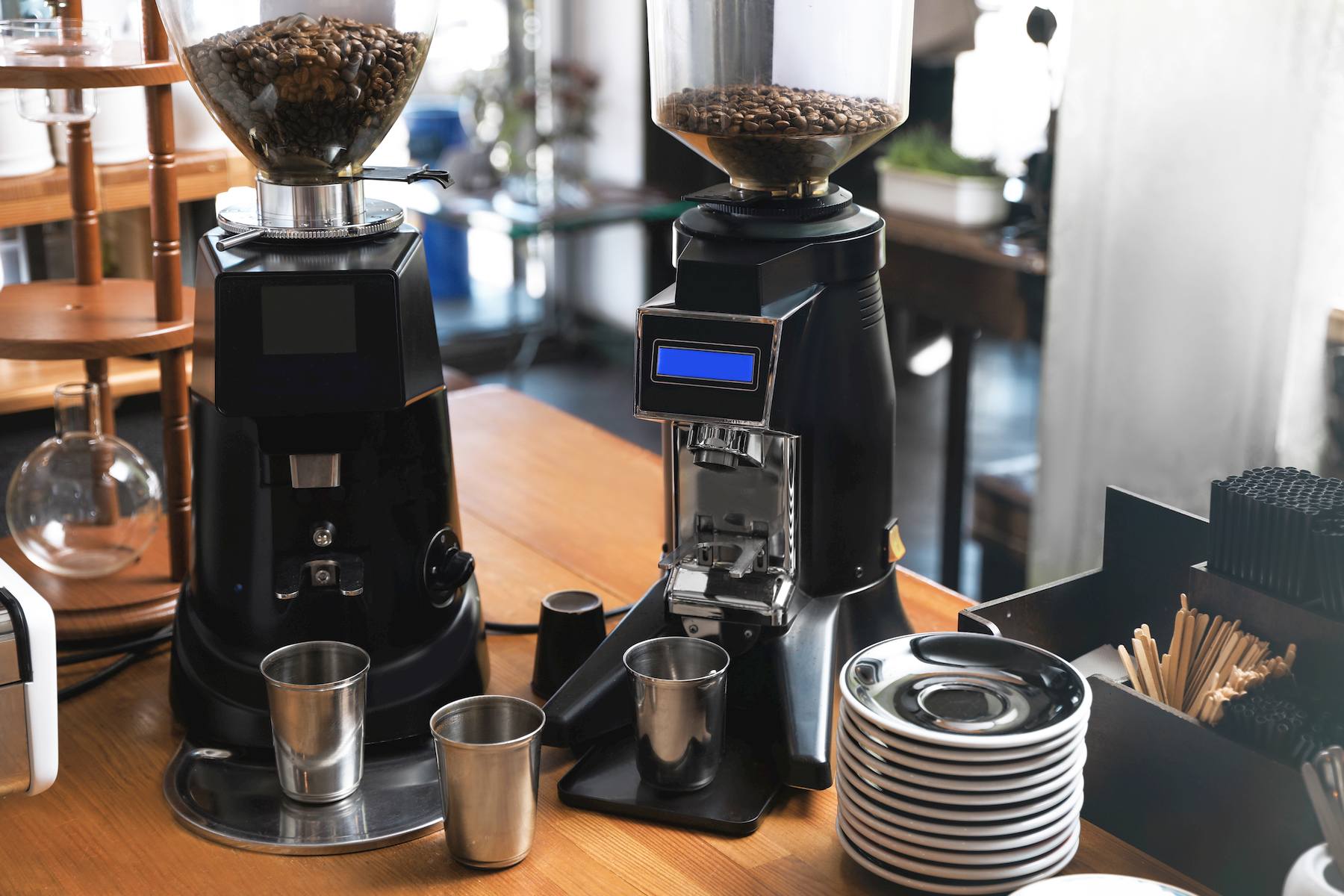If you are new to coffee brewing and wondering how to extract the maximum flavor and richness from your coffee beans, this article is for you.
If you’re an avid drip coffee drinker, you already know many subtle variables can drastically alter the quality of your brewed coffee. The grind size is one such element in drip coffee that can’t be ignored.
This article will discuss critical factors when choosing and tweaking the perfect grind for your drip coffee brewer. We’ll show you why grind size matters and why choosing the right grinder is essential. We’ll also show you how grind size helps you extract the best flavor from your coffee.
What is Drip Coffee?
Drip coffee is one of the most popular coffee brewing methods because it’s simple, inexpensive, and versatile. Preparing drip coffee involves pouring hot water over coffee grounds and filtering before dripping in a vessel. Drip coffee makers come in all different shapes, sizes, and models, but they all use the same concept: heat water, drip it over coffee grounds, and pass the brew through a filter into a carafe or cup.
We talk about these more in our article: What Is Drip Coffee? Take a look, you will certainly find some interesting information, even if you know what drip coffee is.
Why is Grind Size Important for Drip Coffee?
When we said that drip brew is very versatile. We meant that drip coffee can be tweaked to deliver various flavors, such as full-bodied and rich, bright, clean-bodied with a round flavor profile, or even complex. A big part of this versatility is achieved by tweaking the grind size. Grind size is the most crucial variable when tweaking your drip coffee brew.
Brewing delicious cups of coffee requires a precise extraction of the flavor, aroma, oils, and caffeine from coffee grounds. The coffee grind size plays a crucial role in getting the extraction right,. Incorrect grind size could mean the difference between a bitter brew and a rich quality cup of coffee.
The coarser your beans, the less surface area that’s exposed to the hot water. This makes the extraction process longer. This is why the recommended grind size for drip coffee is medium. But if you want to experiment, and you like to explore new flavors, take this with a grain of salt. Stick with me and I’ll show you why in a bit.
A coarse grind is good if you prepare cold brew. Cold brew extraction requires the coffee to sit in the water for hours before releasing its essence. So, grinding it coarser makes it easier to filter.
In contrast, the extraction speed of espresso makers can take at least 30 seconds, as water passes quickly through finely-ground beans under intense pressure. There is much more surface area that’s exposed to the water, when using a finer grind. This speeds up the extraction dramatically.
Getting back to drip coffee, medium grind is what works best for most cases. There is a lot of research in the field, and the industry has clear parameters for brewing.
There is nothing wrong with tweaking your grind size to fit perfectly your taste. I strongly encourage you to do it.
Are Pre-Ground Beans Better Than Freshly Ground Beans? Why Grind at home?
Although buying pre-ground coffee is convenient and practical, the coffee flavor you are getting may not be the best. As a rule, fresh ground coffee is favored since the natural oils and flavors are better preserved, and more compounds can be extracted when brewed.
Grind beans immediately before brewing to preserve their freshness. Coffee begins oxidizing and gradually loses its freshness and quality when exposed to air. Even when sealed in a container, the grounds at the top will be exposed to air more than those at the bottom.
Yes manufacturers have sophisticated packaging lines, and they vacuum the grounds into coffee bricks, or they flush the packages with Nitrogen. But the minute you open the bag, coffee starts oxidizing and lose its freshness.
The biggest problem is that ground coffee oxidizes a few times faster than whole beans. Remember the concept of surface contact we mentioned before? Yes different context, but nonetheless, applicable. When we grind coffee, we increase the contact surface with the air, and we bring oxygen closer to the coffee compounds, speeding up oxidation.
Another factor is that volatile compounds in the coffee beans leach out easier when we grind coffee. You can easily detect if a coffee is “expired” by the amount of bubbling when we pour hot water over the grounds. The gas bubbles are carbon dioxide that escapes, and coffee experts call the process “bloom”.
When a coffee is old, carbon dioxide levels are very low, and you will see very little bloom. While technically we don’t need carbon dioxide in our coffee, the presence of the bloom is a sign that coffee is fresh. But carbon dioxide diffuses out of the ground coffee faster than from whole beans. The same is true for other volatile compounds that give coffee its flavor.
This is why is so critical to own a grinder and grind your beans at home.
There is one more advantage to buy pre-ground, the grind consistency. Roasters use performant commercial grinders that can deliver a uniform grind size, often ignored by home baristas. I personally still recommend grinding at home, but make sure you read the next section, so you understand what kind of equipment you need.
Blade Grinder vs. Burr Grinder: Which Option is Best for Drip Coffee?
The idea behind grinding coffee beans is to allow us to increase the surface area for water to come into contact with. This will determine how long water takes to pass through, which plays a role in releasing vast amounts of compounds from the grounds.
The key to brewing great-tasting coffee lies in the consistency of your grounds. That means that every little coffee particle should be the same size.
Blade Grinder

How you obtain a consistent grind depends on the type of coffee grinder you’re using.
Many people choose the blade grinder, which are small, affordable, and fast; therefore, many people prefer them. But unfortunately, they produce an inconsistent grind with uneven particles. A blade grinder uses a spinning blade to repeatedly chop the beans in smaller and smaller particles. However, there is no control on the size of the coffee particles. The only control is the average size, but the grounds
Furthermore, the fast-spinning blades cause the coffee beans to heat up due to friction; therefore, this reduces the freshness of coffee and makes it more challenging to achieve a perfectly extracted coffee.
With blade grinders, you’ll get a mixture of fine particles and big particles. When exposing these to the hot water, the large particles will take longer to extract, and the fines will extract very fast. This will result in a cup that combines over and under-extracted coffee. The beverage will be literally a combination of sour and bitter coffee.
NCAUSA also makes a point on recommending to stay away from blade grinders. So trust them, if you don’t trust me. I personally use my blade grinder for Turkish coffee only. But this is not the context to discuss that. Let’s get back to our grinders.
Burr Grinder

On the other hand, a burr grinder works by pressing two serrated disks, (burrs), against the coffee beans as they pass through a funnel. The distance between the two burrs is what controls the grind size. The closer the two burrs are the finer the grind size is. This gives the barista a great control over the grind size, and provides a very consistent particle size.
Burr grinders are more expensive than blade grinders, but it’s worth the extra cost as they’re more versatile and produce uniform grounds. They come in manual and electric forms, and most provide settings catering to different grinds.
Burr grinders give you more control over how fine you want your ground to be and are best recommended for drip coffee makers who wish to extract rich, flavorsome compounds.
How Important is Grind Consistency for Drip Coffee?
I need to touch up on this as it might help you save some money when you buy your next burr grinder. Although I talked about it and it is important, it is not as critical as for espresso, or French press. As long as you own a decent burr grinder, and not use the cheapest grinder on Amazon, you should be fine.
Drip coffee is a bit more resilient than other brewing methods. You will still get a decent cup even if you don’t own a Mahlkonig. With inconsistent grinds you will lose on the brightness of the specialty coffee cup, but coffee will be passable. So, at the end of the day, if that matters to you, you’ll get a better grinder, if not, and average one should do it.
What Type of Coffee Grind Is Best Used for Drip Coffee Brewing?
Now that we have covered why a burr grinder is ideal for drip coffee makers, let’s explore the different grind sizes and which ones are also best for brewing drip coffee.
Various Brewing Methods and their Recommended Grind Size
There are seven important grind sizes, and they are used for different brewing methods. Because coffee-making method are different,
- Extra Coarse: The largest type of grind, similar size peppercorns. Most suitable for cold brew methods.
- Coarse: Approximately 1mm in size, like kosher salt. These are used in French press coffee brewing and percolators.
- Medium-Coarse: Similar in size to rough sand and a good choice for the Chemex coffee maker.
- Medium: Medium grounds are the most common grind size for drip coffee and resemble regular sand. These work well with flat-bottomed drip coffee makers or cone-shaped pour-over coffee makers.
- Medium-fine: Similar particle size to table salt, medium-fine grinds allow for an even extraction process as water passes through the grounds at a slower rate than coarse grinds.
- Fine: This is the most common grind available when you buy pre-ground espresso coffee. It has a texture slightly finer than table salt.
- Extra Fine: This has a consistency like powdered sugar and is only used for Turkish coffee brewing.
What Is the Best Grind Size for Drip Coffee?

You probably caught it in the above list, it’s not a fixed size. But I’ll be a bit more precise than that in a second.
Generally, you want to stick with a medium grind size for drip coffee. A coarser grind will only give you under-extracted coffee as the water quickly passes through chunkier coffee particles and won’t unleash the full range of oils, aromas, and flavor.
Finer grinds are also best avoided for drip coffee and are more suited for espresso makers, or Turkish coffee brewing. The fine particles will clog filters, and the brew will just pool on top of the coffee grounds way longer than you want to. As a result, your coffee will taste bitter due to over-extraction.
Here is a list with the various drip coffee brewing methods and the recommended grind size.
- Medium-coarse – Chemex, Kalita Wave, Clever Dripper, many pour-over coffee makers
- Medium – cone filter coffee makers. The cone shaped filter slows down the water drip through the coffee grounds. This is why we need to add little extra resistance by grinding finer.
- Medium-fine – flat bottom filter coffee makers. Because there is a wider surface area, and a shallower coffee bed, water will pass through faster. Most automatic drip coffee makers have a flat bottom filter, also named a basket filter. Hario recommends a medium-fine grind when brewing with their V60.
These are general rules, but there other variables that can influence your grind size, such as roast level, and paper filter type.
The general rule is that larger grinds are slow to extract, so you will have to compensate with brewing time, or brew temperature. Finer grinds increase the strength and flavor, but you want to make sure you don’t extract too much out if the grounds, because you will get an over-extracted cup.
Since there are a few different medium grinds available, which one you choose depends on your preferred brewing method and the type of coffee maker. Furthermore, you’ll also need to consider factors like the water-to-coffee ratio and contact time.
Grind Size for Pour-over Coffee Making
Manual drippers, or pour-over devices are the best option if you want to control every aspect of your extraction. Typically, pour over uses a medium-coarse grind. However, as there are various pour-over brewers, you’ll need to experiment to obtain the desired results. Typically, pour-over coffee requires a ratio of 16 grams of water for each gram of coffee is recommended.
The challenge with pour over is that every manufacturer has their own dripper, and their special filters. This dripper and paper filter combination calls for a specific grind size, which is established by the manufacturer.
If you look at Kalita Wave, their dripper is a flat bottom one, but the recommended grind size is medium-coarse. This is because their filter is dense, and restricts the flow, giving the water more time in contact with the grounds.
All this to say that you need to start with the manufacturer recipe. You can play around it, but make sure you taste the original recipe. We have a tutorial on how to make drip coffee with a coffee machine, which is a more detailed and technical view on the subject.
Automatic Drip or Machine Drip Coffee Makers
For drip machine coffee making, choose a medium size grind. Most manufacturers will also supply instructions to help you determine the grind size for your drip coffee maker. To get the best results stick to a water-to-coffee ratio of 17:1. There are instances when you want to change the grind size, but this is for another article where we talk about advanced brewing variable tweaking.
Final Thoughts
The key to a perfect cup of drip coffee is finding the correct grind size to maximize flavor and body. Choosing the wrong size will result in an over-extracted or an under-extracted coffee brew with more bitterness or harshness.
A medium-sized grind is ideal, particularly for drip coffee makers. If you like pour-over coffee, start with a medium-coarse grind, or if your brewing process means that water quickly passes through the grounds, you should choose a medium-fine grind.
Getting the ideal grind size for your desired cup of drip coffee will take some experimentation and testing. So, if you find your coffee is too weak, try grinding it more finely. On the other hand, if the coffee taste is too strong, try a coarser grind size and keep tweaking this until you find the sweet spot.
If the taste is not quite what you expected, start by tweaking the brewing temperature first, and only if that doesn’t work, tweak the grind size.
To get the most flavor and aroma from your beans, always grind them immediately before brewing to avoid oxidization when grounds are exposed to the air. Following these tips will enhance your brewing skills so you can create that delicious cup of coffee you’ve been striving for.
